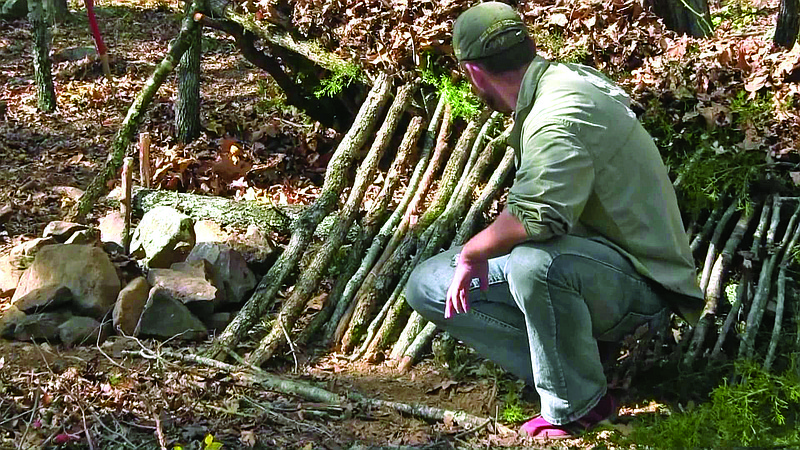Build a Bough Bed
In cold weather, it is critical to get off the ground. This is when a bough bed can be a cozy addition to your shelter. Find two poles that are as long as you are tall, roll them about three feet parallel to each other and fill the space between with six inches of pine needles, leaves and other vegetation.
You may never crash-land in the Canadian wilderness with nothing but a hatchet or find yourself marooned on a desert island with your bestie Wilson (who happens to be a volleyball), but when you're hiking, all it takes is one wrong turn to leave you lost, stranded and alone.
That's why every hiker should know how to build a bivouac shelter from nothing but materials found in the forest. Because you won't always have a tent. You won't always have a tarp. And you probably won't know what to do when the winds pick up, the rains pour down and you realize you're in for a long, cold night.
Lean-To
If you're looking to put together a shelter in a hurry, the lean-to is your best bet. This single-walled shelter has been a longtime favorite of survivors because it serves as a windbreaker, overhead shelter and fire reflector.
Build time: 1 hour
Flaws: It doesn't trap heat well, and if the wind or rain shifts direction well, it might be an uncomfortable night.
* Find a long, sturdy branch or thin log to serve as your pole.
* Wedge the pole into the crotches of two trees that are close together. If there are no crotches, tie the pole to the tree with your belt or shoelaces.
* Collect more poles and tilt them against one side of your main pole to make a "roof."
* Pack any vegetation you can find onto your roof. That can include leaves, grass, moss, brush, ferns, pine needles - anything nearby is fair game.
A-Frame
Sometimes, staying warm can be the difference between life and death. This A-shaped hut may seem a little tight, but once you squeeze in, your body heat will turn the hovel into a warm, cozy little safe haven.
Build time: 2-4 hours
Flaws: If you build a fire, you won't be able to lie parallel to it to warm your entire body.
* Find a pole about 9 to 12 feet long.
* Lift one end of your pole up, then wedge it between the fork of a tree or set it atop a stump or rock. You can also use two shorter sticks to prop it up if no other option is available.
* Line each side of the pole with sticks, each tilted at an angle to form the structure's "ribs."
* Heap light, dry debris over the ribbing. Anything that traps air will do perfectly.
Wickiup
When it comes to survival, this teepee-like structure has it all: protection from the pounding rain, a shield from the blazing sun and enough room to light a tiny fire inside. Build this shelter if you know you might be making an extended stay.
Build time: 3-6 hours
Flaws: Takes a long time to build.
* Collect a couple dozen poles. Try to find a few with forks on one end.
* Tilt the three strongest poles together, using the forks to lock them at the top. Spread the poles away from each other at the bottom to form a freestanding tripod.
* Lean the remaining poles against and around the tripod structure. Make sure to leave an opening for entry.
* Cover the structure with vegetation and debris. Make sure to leave a vent open at the top for smoke. Use wet or green vegetation if you plan to light a fire inside.
